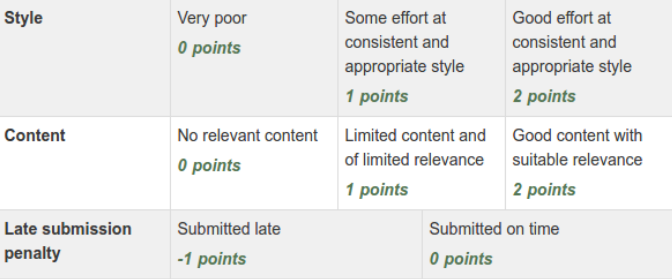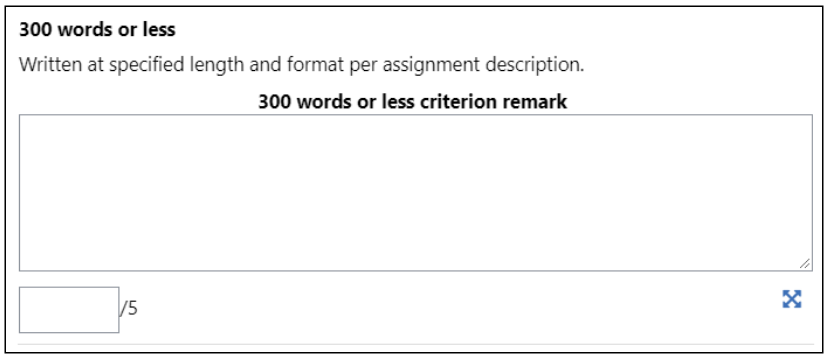Center for Excellence in Teaching and Learning
Kresge Library, Room 430
100 Library Drive
Rochester,
Michigan
48309-4479
(location map)
(248) 370-2751
[email protected]

Building Clear Expectations and Feedback into Online Course Design
For students in higher education, the pressure and stakes of maintaining their academic performance and grades are high. They are often high enough that, unfortunately, students will resort to cheating and other forms of academic dishonesty in their course work to ensure those grades. Although there are many tools to help instructors monitor and detect cheating, especially in online or hybrid courses, we also want to be proactive in our approach. Thus, in the face of those high stakes, something instructors can do is encourage students to see themselves as capable of academic achievement on their own merit.
One way instructors can help students increase this positive self-perception is by ensuring their overall course design provides clear expectations for how students can successfully achieve the learning outcomes of the course. A best practice of course design and instructional strategy to decrease academic dishonesty is to provide rubrics, grading guides, and examples of previous student work that meets expectations. By giving both clear evaluation criteria and substantive feedback on student work throughout the course with the help of these tools, students will have a more clear direction on how to improve and be successful while maintaining their academic integrity.
Rubrics, Grading Guides, & Examples of Previous Student Work
By providing a detailed rubric or grading guide for each assignment with specific evaluation criteria, students will know exactly how they will be graded and evaluated. In addition, these tools allow instructors to give substantial feedback to their students consistently and in a time efficient manner. Moodle has a built-in rubric or grading guide builder that can be used to easily grade students’ work. Pairing a rubric or grading guide with at least 3 examples of previous student work that meets expectations can greatly decrease anxiety and clarify to current students how they can be successful.
Moodle Rubric
When grading with a rubric in Moodle, the instructor designs a set of criteria with multiple levels of competency for the Moodle Assignment where students submit their work. Then, when assessing student submissions, a form presenting the criteria allows the instructor to rank each criterion by level and leave a comment. The form then totals the scores to calculate a grade according to the Grade Settings for the Assignment.
View complete steps for creating and grading a rubric in Moodle at the Using a Rubric in Moodle help document.
Moodle Grading Guide
A grading guide in Moodle functions much like a rubric. However, unlike grading with a rubric, a grading guide does not let the instructor rank each criterion according to more than one level. Instead, each criterion has one comment box and one box for entering a numeric score.
View complete steps for creating and grading a grading guide in Moodle at the Using a Grading Guide in Moodle help document.
Examples of Previous Student Work
Instructors may be concerned that if they provide examples of previous student work for an assignment or project that current students will submit something that looks exactly the same. However, if the instructor posts a wide variety of examples that meet the learning outcomes of the assignment, they can reinforce that there are multiple ways to go about an assignment successfully and embolden students to use their own creativity and ideas. This is further encouraged when instructors design more authentic assessments that require students to dig deeper into personal or real-life experiences to complete the assignment.
Additional Course Design Strategies to Consider
In addition to the strategies outlined above, consider these additional course design and instructional strategies to decrease the likelihood of academic dishonesty in your courses:
- Build a sense of both class community and instructor presence in your courses to increase the likelihood that struggling students will reach out to the instructor or their peers for help, instead of resorting to academic dishonesty.
- List academic support services in your syllabus so that students who need help know where to go for appropriate resources (i.e. The Writing Center or Tutoring Center).
- Allow for ungraded or low-stakes opportunities to practice so that students can gain further confidence in their academic abilities.
If you’re interested in learning more about course design strategies to decrease academic dishonesty in online or hybrid courses, sign up for a 1-on-1 appointment with the e-LIS Instructional Design Team (calendar link at the bottom of the page) or email them at [email protected].
References and Resources
Reduce Cheating Online: Teaching Tip
Save and adapt a Google Doc version of this teaching tip.
About the Author
Jess Tess-Navarro is an Instructional Designer with e-LIS and has previously worked at OU in Student Affairs and as a Special Lecturer. She co-facilitates the e-LIS Quality Online Teaching Certification Course. Jess earned a Master of Arts from Michigan State in 2014 and Post Master's Certificate in Higher Education from OU in 2017. Others may share and adapt under Creative Commons License CC BY-NC.View all CETL Weekly Teaching Tips. Follow these and more on Facebook, Twitter, and LinkedIn.





